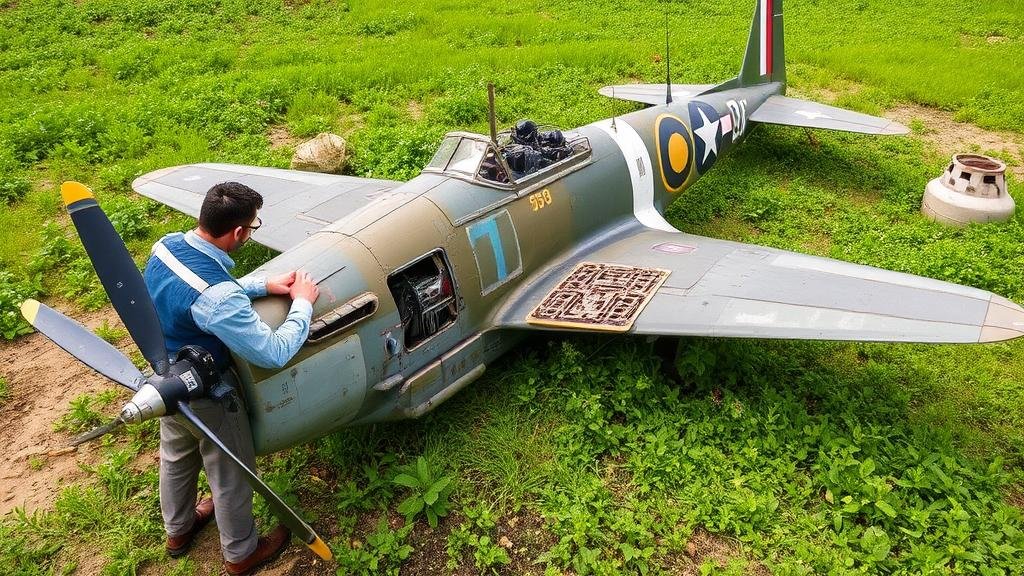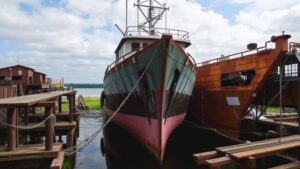Using Aviation Archaeology to Locate Hidden WWII Aircraft Relics
Using Aviation Archaeology to Locate Hidden WWII Aircraft Relics
Aviation archaeology, a sub-discipline of archaeology focusing on the study of aircraft and aviation-related artifacts, has significantly contributed to uncovering hidden remnants of World War II aircraft. By employing various techniques, including aerial reconnaissance, historical document analysis, and ground surveys, researchers have successfully located many historically significant aircraft relics. This article delves into the methodologies, challenges, and importance of aviation archaeology in locating these relics.
The Historical Context of WWII Aircraft Relics
World War II was a pivotal moment in aviation history, with thousands of aircraft produced and operated across numerous theaters of war. It is estimated that over 500,000 aircraft were used in combat during the conflict, many of which were lost in battle or wrecked during training exercises. Since the wars end in 1945, a considerable number of these aircraft have remained buried, submerged, or hidden in remote areas. The recovery of these relics not only serves to honor the legacy of those who fought but also provides invaluable insights into aviation technology and history.
Methodologies in Aviation Archaeology
The techniques used in aviation archaeology can be broadly categorized into three main methodologies: historical research, aerial reconnaissance, and ground survey.
- Historical Research: This involves the examination of archival materials, military records, and personal accounts to identify crash sites and the circumstances surrounding aircraft losses. For example, the 2012 recovery of a B-24 Liberator in Papua New Guinea was facilitated by extensive records from the U.S. War Department.
- Aerial Reconnaissance: Utilizing satellite imagery and drones, researchers can survey vast landscapes to pinpoint potential crash sites. A notable example is the use of satellite imagery to locate the wreckage of a P-38 Lightning aircraft in a remote area of Greenland in 2018.
- Ground Survey: Once potential sites are identified, archaeologists conduct ground surveys using metal detectors, geophysical surveys, and excavation techniques to locate and recover artifacts. recovery of a Focke-Wulf Fw 190 in France demonstrated this approach, where ground-penetrating radar helped identify buried components of the aircraft.
Challenges Faced in Aviation Archaeology
Aviation archaeology is fraught with challenges, including environmental factors, legal restrictions, and ethical considerations.
- Environmental Factors: Many WWII sites are located in remote or inhospitable environments, such as jungles or mountainous regions, making access difficult. For example, the dense vegetation in the jungles of Papua New Guinea complicates the search for aircraft wrecks.
- Legal Restrictions: The recovery of wartime relics may be governed by local laws and international treaties. Archaeologists must navigate these regulations to ensure compliance. In some cases, relics are considered protected cultural heritage, requiring a proper permit for excavation.
- Ethical Considerations: The excavation of sites where lives were lost raises ethical questions. Archaeologists must approach these sites with respect and sensitivity, often seeking to memorialize the individuals associated with the wrecks.
Case Studies of Successful Discoveries
Several successful discoveries illustrate the effectiveness of aviation archaeology:
- Lockheed P-38 Lightning (Greenland, 2018): After being lost for over 75 years, this aircraft was located through aerial surveys and finally excavated, providing insights into wartime aviation conditions.
- B-29 Superfortress (Mariana Islands, 2006): The wreckage of the Lady Luck was found utilizing information from local fishermen and historical documents, illustrating the importance of community involvement.
- RAF Spitfire (Hooge Crater, France, 2015): Recovered from a ditch where it crash-landed during the Battle of the Somme, the careful excavation of this aircraft provided critical data about its operational history.
The Importance of Public Engagement and Education
Engaging the public is vital for the success of aviation archaeology. Educational programs, community involvement, and events foster interest in the preservation of aviation history. For example, the Wings Over the World program in the UK educates students about aviation archaeology while engaging them in local historical projects. Such initiatives not only enrich local communities but also help preserve invaluable historical knowledge.
Conclusion
The application of aviation archaeology in locating hidden WWII aircraft relics serves as a testament to the dedication of researchers and enthusiasts committed to preserving aviation history. Through a combination of historical research, advanced technologies, and ethical considerations, archaeology uncovers forgotten narratives from the past. As techniques continue to evolve, the future of aviation archaeology promises exciting discoveries that will further our understanding of both technological advancements and the human experiences embedded within these wartime relics.
Ultimately, the findings from aviation archaeology enrich historical knowledge, providing a more nuanced understanding of World War IIs impact on aviation and society at large.



